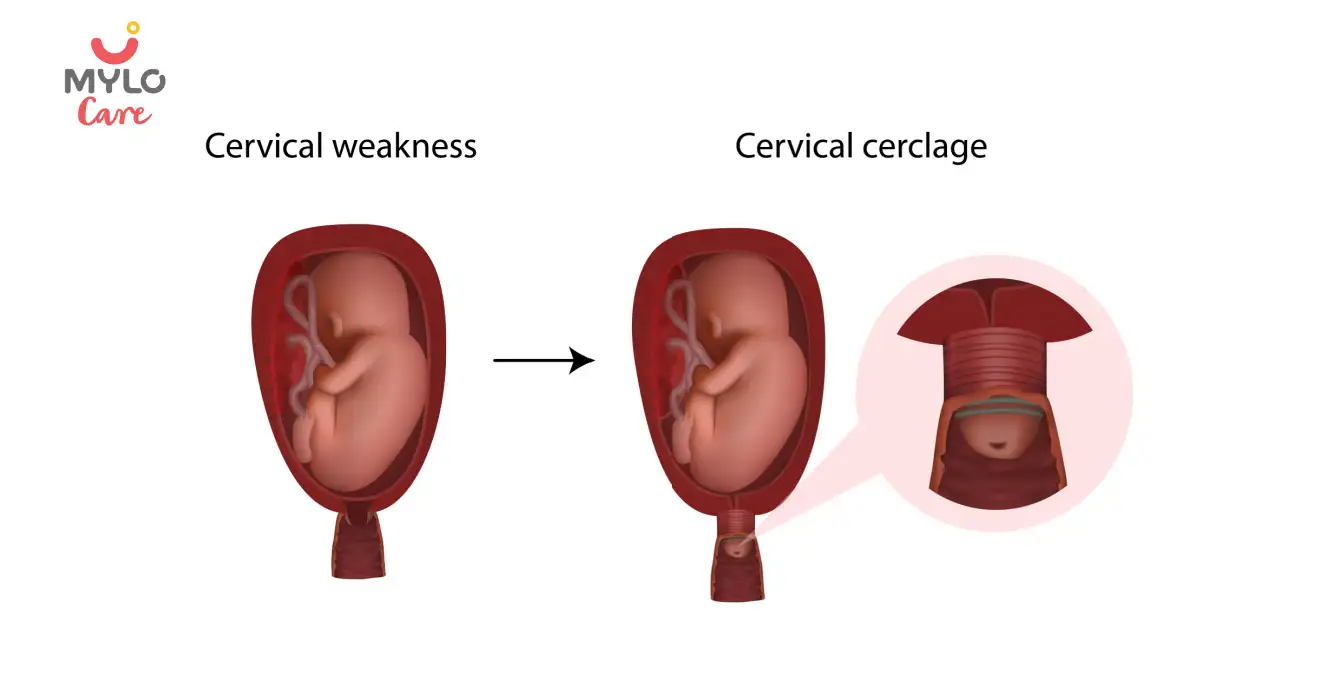Home

Ovulation

White Discharge After Ovulation: A Normal Occurrence or Cause for Concern?
In this Article

Ovulation
White Discharge After Ovulation: A Normal Occurrence or Cause for Concern?
Updated on 4 December 2023
In the journey towards conception, a woman's body goes through a series of intricate changes and signals. One such phenomenon that often raises questions and concerns is white discharge after ovulation. While many women experience this discharge as a normal occurrence, others may find themselves wondering if it's a cause for concern.
In this article, we will explore what causes discharge after ovulation, whether it's a sign of fertility, and when it might signal a need for medical attention.
Is it normal to experience discharge after ovulation?
It is completely normal to experience vaginal discharge after ovulation. This discharge is typically thick and dry, unlike the fertile cervical mucus that is thin, clear, and slippery like egg whites. The white discharge is a result of hormonal changes in the body and is considered a normal occurrence.
It is important to note that everyone's experience may differ, and not everyone may notice these changes in discharge. However, if the discharge is accompanied by other symptoms such as itching, odor, or discomfort, it may indicate an infection and should be evaluated by a healthcare professional.
You may also like: Watery Discharge Before Period: Is It Normal or a Cause for Concern
Types of white discharge after ovulation
Let us understand the different types of vaginal discharge a woman may experience after ovulation:
1. Milky white discharge after ovulation
This type of discharge is often referred to as "milky" due to its creamy and opaque appearance. It is typically thick and may have a mild odor. This discharge after ovulation is usually considered normal and is a result of increased estrogen levels during the luteal phase of the menstrual cycle.
2. Watery discharge after ovulation
Watery discharge is clear and more fluid-like compared to other types of discharge. It can be a sign of increased cervical mucus, which is common after ovulation. This type of discharge helps to create a favorable environment for sperm to travel through the cervix and reach the egg for fertilization.
3. Creamy white discharge after ovulation
This type of discharge after ovulation is often thick and lotion-like in consistency. It can be a combination of cervical mucus and vaginal secretions. This type of discharge is also considered normal and is caused by hormonal changes during the menstrual cycle.
4. Egg white discharge after ovulation
Egg white discharge is clear and stretchy, resembling raw egg whites. This type of discharge is typically seen around the time of ovulation itself, rather than after. It indicates the presence of fertile cervical mucus, which helps sperm to survive and swim through the reproductive tract.
5. White sticky discharge after ovulation
While such a discharge after ovulation can be normal, it may also be a cause for concern. If the discharge is accompanied by itching, a foul odor, or any other unusual symptoms, it is important to consult a healthcare professional as it could be a sign of an infection or other underlying condition.
You may also like: Types of Vaginal Discharge, What They Mean and What is Normal?
What are the causes of milky white discharge after ovulation?
Let us now understand some causes of discharge after ovulation that’s white in colour:
1. Hormonal changes
Fluctuations in hormone levels, particularly estrogen and progesterone, can lead to an increase in milky white discharge after the ovulation. These changes are a normal part of the menstrual cycle.
2. Cervical mucus production
The cervix produces mucus to help protect and nourish sperm. After ovulation, cervical mucus tends to become thicker and stickier, resulting in milky white discharge.
3. Pregnancy
Milky white discharge can also be a sign of early pregnancy. If you are sexually active and experiencing other pregnancy symptoms, it is recommended to take a pregnancy test or consult a healthcare professional.
4. Sexual arousal
Sexual arousal can stimulate the cervix to produce more mucus, leading to an increase in white discharge. This is a normal physiological response and is nothing to be concerned about.
5. Infection or inflammation
In some cases, white sticky discharge after ovulation may be a result of an infection or inflammation in the reproductive tract. If you experience any unusual symptoms or the discharge is accompanied by itching, a foul odor, or discomfort, it is important to seek medical attention.
What does creamy white discharge after ovulation mean?
Creamy white discharge is a common occurrence after ovulation and is typically nothing to worry about. It is often a combination of cervical mucus and vaginal secretions, which can vary in consistency and appearance throughout the menstrual cycle. The creamy texture is due to increased progesterone levels during the luteal phase.
What does watery discharge after ovulation mean?
Watery discharge is a normal part of the menstrual cycle and is often a sign of increased cervical mucus. This type of discharge helps sperm to travel through the cervix and reach the egg for fertilization. It is usually clear and more fluid-like compared to other types of discharge.
Is white sticky discharge after ovulation a cause for concern?
While white sticky discharge can be normal, it is important to pay attention to any accompanying symptoms. If the discharge is accompanied by itching, a foul odor, or any other unusual symptoms, it could be a sign of an infection or other underlying condition. In such cases, it is recommended to consult a healthcare professional for a proper diagnosis and treatment.
The Bottomline
In most cases, the occurrence of white discharge after ovulation is a normal part of the menstrual cycle. However, it is important to be aware of any changes in color, consistency, or accompanying symptoms that may indicate an underlying issue. Remember, every woman's body is unique, and what is considered normal for one person may not be the same for another. Trust your instincts and seek medical advice whenever necessary.
References
1. Najmabadi S, Schliep KC, Simonsen SE, Porucznik CA, Egger MJ, Stanford JB. (2021). Cervical mucus patterns and the fertile window in women without known subfertility: a pooled analysis of three cohorts. Hum Reprod.
2. Holesh JE, Bass AN, Lord M. Physiology, Ovulation. (2023). In: StatPearls [Internet]. Treasure Island (FL): StatPearls Publishing



Written by
Anupama Chadha
Anupama Chadha, born and raised in Delhi is a content writer who has written extensively for industries such as HR, Healthcare, Finance, Retail and Tech.
Read MoreGet baby's diet chart, and growth tips

Related Articles
Related Questions
Influenza and boostrix injection kisiko laga hai kya 8 month pregnancy me and q lagta hai ye plz reply me

Hai.... My last period was in feb 24. I tested in 40 th day morning 3:30 .. That is faint line .. I conculed mylo thz app also.... And I asked tha dr wait for 3 to 5 days ... Im also waiting ... Then I test today 4:15 test is sooooo faint ... And I feel in ma body no pregnancy symptoms. What can I do .

Baby kicks KB Marta hai Plz tell mi

PCOD kya hota hai

How to detect pcos

RECENTLY PUBLISHED ARTICLES
our most recent articles

Ovaries
Normal Ovary Size: How It Varies and What It Means for You

Festivals & Celebrations
2024 Calendar with Holidays and Festivals of India

Abortion
After-Abortion Sex: A Guide to Physical and Emotional Wellness

Premature Delivery
Cervical Cerclage: A Closer Look at the Procedure and Its Benefits

Stories
The Ultimate Guide to Panchatantra Stories for Kids

Labour & Delivery
Which Is Better Normal Or Cesarean Delivery
- How to Get Baby in Right Position for Birth?
- Paheliyan 101: Riddles for Kids That Educate and Entertain
- The ABCs of Cephalic Presentation: A Comprehensive Guide for Moms-to-Be
- The Ultimate Guide to Consuming Chia Seeds in Pregnancy
- Essential Tips for Normal Delivery After Cesarean
- Crab During Pregnancy: Benefits, Risks and Smart Choices
- Normal Delivery Tips: An Expecting Mother's Guide to a Smooth Childbirth Experience
- Top 10 Panchatantra Stories in English You Must Read to Your Children
- What Helps in Improving Mental Health of Women
- Childhood Disorders: Meaning, Symptoms & Treatment
- Bleeding During Pregnancy 8 Weeks: Should You See a Doctor?
- The Ultimate Guide to Having Sex After C Section
- The Ultimate Guide to Baby Brain Development Food During Pregnancy
- Nappy Rash: Your Ultimate Guide to Symptoms and Quick Relief


AWARDS AND RECOGNITION

Mylo wins Forbes D2C Disruptor award

Mylo wins The Economic Times Promising Brands 2022
AS SEEN IN
















- Mylo Care: Effective and science-backed personal care and wellness solutions for a joyful you.
- Mylo Baby: Science-backed, gentle and effective personal care & hygiene range for your little one.
- Mylo Community: Trusted and empathetic community of 10mn+ parents and experts.
Product Categories
baby carrier | baby soap | baby wipes | stretch marks cream | baby cream | baby shampoo | baby massage oil | baby hair oil | stretch marks oil | baby body wash | baby powder | baby lotion | diaper rash cream | newborn diapers | teether | baby kajal | baby diapers | cloth diapers |








